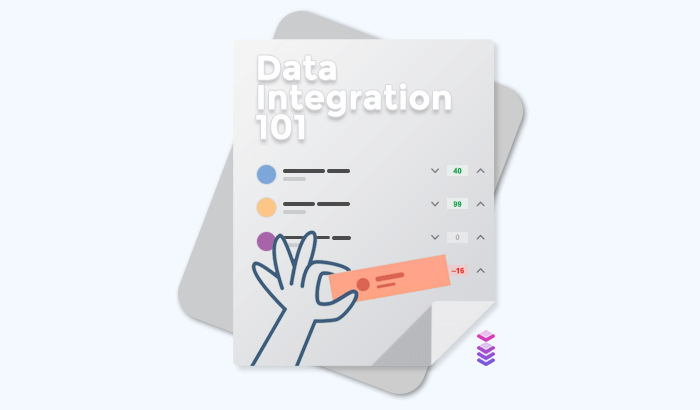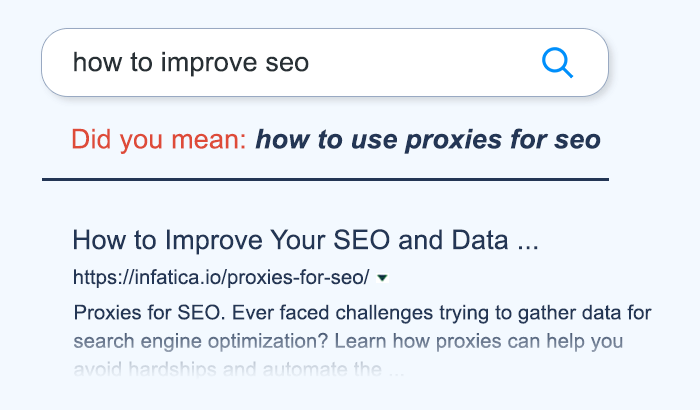

In today’s digital economy, data is a strategic asset – and the web is one of the richest, fastest-growing sources of it. But raw data alone isn’t enough: To generate real business value, organizations need a scalable way to transform scattered, unstructured web data into clean, unified datasets. That’s where web data integration becomes essential – let’s learn its ins and outs in this guide!
What is Web Data Integration?
At its core, web data integration is the process of collecting data from various web sources and transforming it into a unified format that can be easily used for analysis, reporting, or operational decision-making. It goes beyond simple web scraping – it's about turning disparate, unstructured online data into structured, actionable intelligence.
Key Components of Web Data Integration
To better understand how it works, let’s break it down into its primary components:
- Data discovery: Identifying and cataloging relevant web sources, from public websites to marketplaces, forums, and APIs.
- Data extraction: Retrieving data from those sources using automated tools like web scrapers or API connectors.
- Data transformation: Cleaning, normalizing, and structuring the extracted data to ensure consistency – regardless of the format it came in (HTML, JSON, XML, etc.).
- Data integration: Merging this standardized data into centralized systems such as data warehouses, BI platforms, or internal dashboards.
- Continuous updating: Many use cases require fresh data. Web data integration ensures your pipelines can handle frequent updates or real-time streams when needed.

How It Differs from Related Concepts
| Aspect | Web Data Integration | Web Scraping | ETL (Extract, Transform, Load) |
|---|---|---|---|
| Scope | End-to-end process from data discovery to integration | Focused on data extraction from web sources | Focused on structured internal data workflows |
| Data Sources | Multiple web-based sources (sites, APIs, feeds) | Primarily websites | Internal databases, files, applications |
| Output | Structured, unified, and usable datasets | Raw or semi-structured data | Clean, structured data loaded into internal systems |
| Complexity | High – involves orchestration, transformation, validation | Medium – focused on extraction logic | Medium to high, depending on systems and logic |
| Use Cases | Market intelligence, real-time monitoring, competitor analysis | Simple data collection tasks | Internal reporting, analytics, data warehousing |
| Automation & Maintenance | Designed for ongoing, scalable pipelines | Often built for one-off or short-term tasks | Long-term data pipelines for internal use |
Why Web Data Integration Matters
The web is messy: Product listings vary by seller; news updates appear in different formats; prices change frequently across marketplaces. Web data integration brings order to that chaos by enabling companies to aggregate, standardize, and operationalize external data. Whether it’s monitoring competitor pricing, tracking market trends, or generating leads, integration turns one-time scrapes into reliable, repeatable intelligence pipelines.
High-Impact Use Cases
Here are the major ways businesses are using web data integration to gain a competitive edge:
- Market intelligence: Aggregate product reviews, competitor pricing, and customer sentiment to guide strategic decisions.
- Lead generation: Extract contact data, company profiles, or hiring signals from business directories and career sites.
- Brand monitoring: Track brand mentions across forums, social media, and e-commerce platforms to manage reputation.
- Investment research: Use web data to spot market signals – like job postings, product launches, or changes in leadership – faster than traditional methods.
- Supply chain insights: Monitor supplier pricing and inventory status across regional marketplaces in near real time.
Common Challenges in Web Data Integration
While web data integration offers significant value, it’s not without its challenges. Organizations often encounter hurdles that can slow down projects, limit scalability, or compromise data quality. Understanding these challenges is the first step toward building resilient and effective integration pipelines.
1. Data Inconsistency and Quality Issues
Web data is inherently disorganized. The same type of information – like product details or contact info – can appear in different formats across sites. Plus, websites change structure often, which can break extraction logic and lead to:
- Incomplete or outdated records
- Duplicate or mislabeled entries
- Conflicting values across sources
Ensuring consistent and accurate output requires robust transformation logic and validation processes.
2. Scalability and Performance
As data demands grow, so does the complexity of maintaining a scalable integration pipeline. Challenges include:
- Managing high volumes of traffic across many sources
- Balancing speed, reliability, and cost
- Avoiding IP bans or rate limits from target sites
Without the right infrastructure (e.g., rotating proxies, load balancing), pipelines can struggle under pressure.
3. Legal and Ethical Considerations
Collecting data from the web isn’t just a technical issue – it’s also a legal and ethical one. Factors to consider:
- Terms of service compliance for each website
- Data privacy regulations like GDPR and CCPA
- Respect for robots.txt and rate-limiting guidelines
Staying compliant while maximizing data coverage is a delicate but essential balance.
4. Integration with Internal Systems
Extracting and cleaning data is only part of the equation. The real value comes from seamlessly integrating it into your business workflows:
- Feeding data into CRM, ERP, or BI tools
- Matching external data with internal datasets
- Ensuring updates don’t break downstream processes
This often requires custom connectors, scheduling logic, and transformation rules tailored to each environment.
How Infatica Helps
At Infatica, we understand that web data integration isn’t just about gathering data – it’s about making that data reliable, usable, and scalable. That’s why our solutions are built to handle complexity, reduce friction, and accelerate your path to insight.
Web Scraper: Automate Reliable, Scalable Data Extraction
Our Web Scraper is designed for performance, flexibility, and ease of integration. Whether you need to monitor product listings, extract business profiles, or pull data from dynamic sites, Infatica’s scraper takes care of the heavy lifting. Key features include:
- Customizable workflows: Tailor extraction logic to suit your data structure and target pages.
- Automatic resilience: Handles layout changes and dynamic content with smart retry logic and adaptive selectors.
- Proxy integration: Bypass geo-restrictions and rate limits using Infatica’s robust residential and datacenter proxy infrastructure.
- API access: Integrate directly with your systems via API for seamless automation.
Datasets: Pre-Curated Data, Ready to Use
Looking for ready-to-go data without the hassle of building and maintaining a pipeline? Our Datasets offering provides instant access to rich, structured data across high-demand verticals. Available Datasets include:
- E-commerce product catalogs
- Social media records
- Job market intelligence
- Real estate listings
- Business directories, and more.
Each dataset is continuously updated, cleaned, and normalized – making them ideal for market research, analytics, or training machine learning models. No setup required – just download and analyze. Deduplicated, structured, and standardized formats.
Best Practices for Web Data Integration
Web data integration can unlock significant strategic advantages – but only if it’s done right. From ensuring long-term reliability to maximizing data quality, here are the best practices we recommend for building strong, scalable data pipelines.
1. Start with Clear Objectives
Before you build anything, define the specific goals for your data integration project:
- What questions are you trying to answer?
- What decisions will this data support?
- How often do you need updates?
Clear objectives help determine the right sources, update frequency, and architecture – saving time and reducing rework down the line.
2. Use the Right Tools for the Job
Not all tools are created equal. Choose solutions that are purpose-built for web data workflows:
- Web scrapers with dynamic content support and automation features
- Proxies that help you avoid bans and access geo-restricted content
- Data management platforms to store, transform, and route your data
Infatica’s Web Scraper and Datasets are designed with these requirements in mind, offering robust automation and high-quality data from day one.
3. Normalize and Validate Early
Web data is often unstructured and inconsistent. Build transformation and validation steps into your pipeline early:
- Normalize formats (e.g., date formats, currency, units)
- De-duplicate entries across sources
- Validate against business rules (e.g., missing fields, invalid values)
This ensures downstream systems get clean, usable data – no manual clean-up required.
4. Plan for Change
Websites evolve – layouts shift, fields get renamed, and structures break. Design your pipeline to adapt:
- Use modular extraction logic that can be updated without overhauling the entire workflow
- Set up monitoring and alerts for failure detection
- Leverage automated testing to validate output quality regularly
Infatica’s infrastructure helps handle change gracefully, with built-in fault tolerance and support for long-term scalability.
Frequently Asked Questions
You can also learn more about:

SEO proxies are a must for scalable SEO tasks like keyword tracking, SERP scraping, and avoiding IP bans. Find out how proxies can boost your data collection efforts and keep your campaigns running smoothly!






